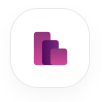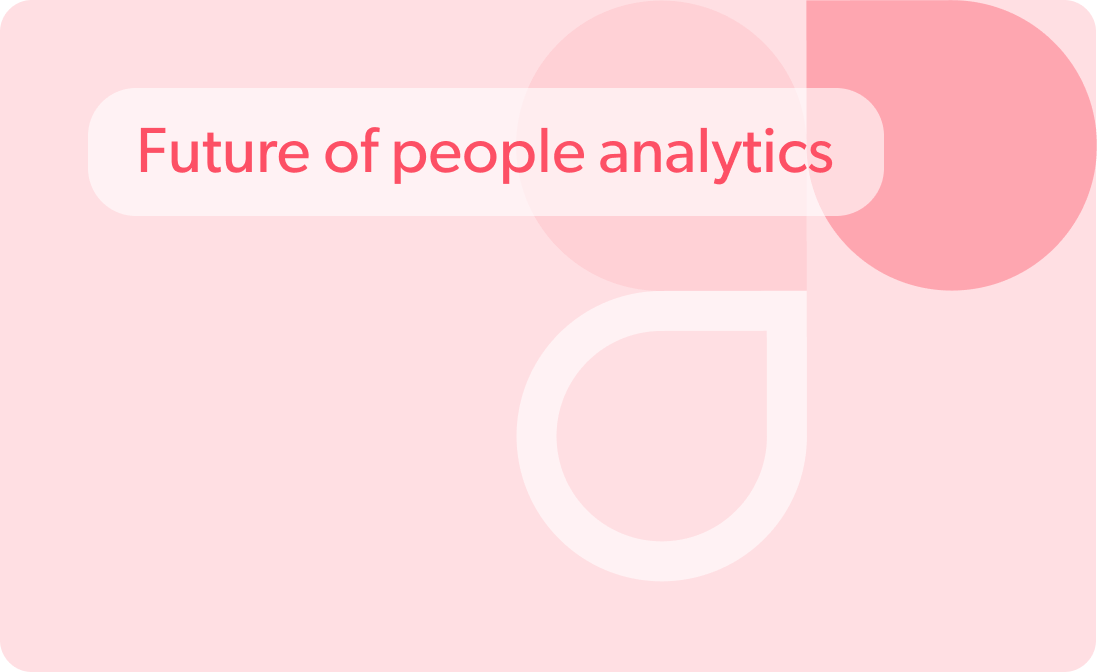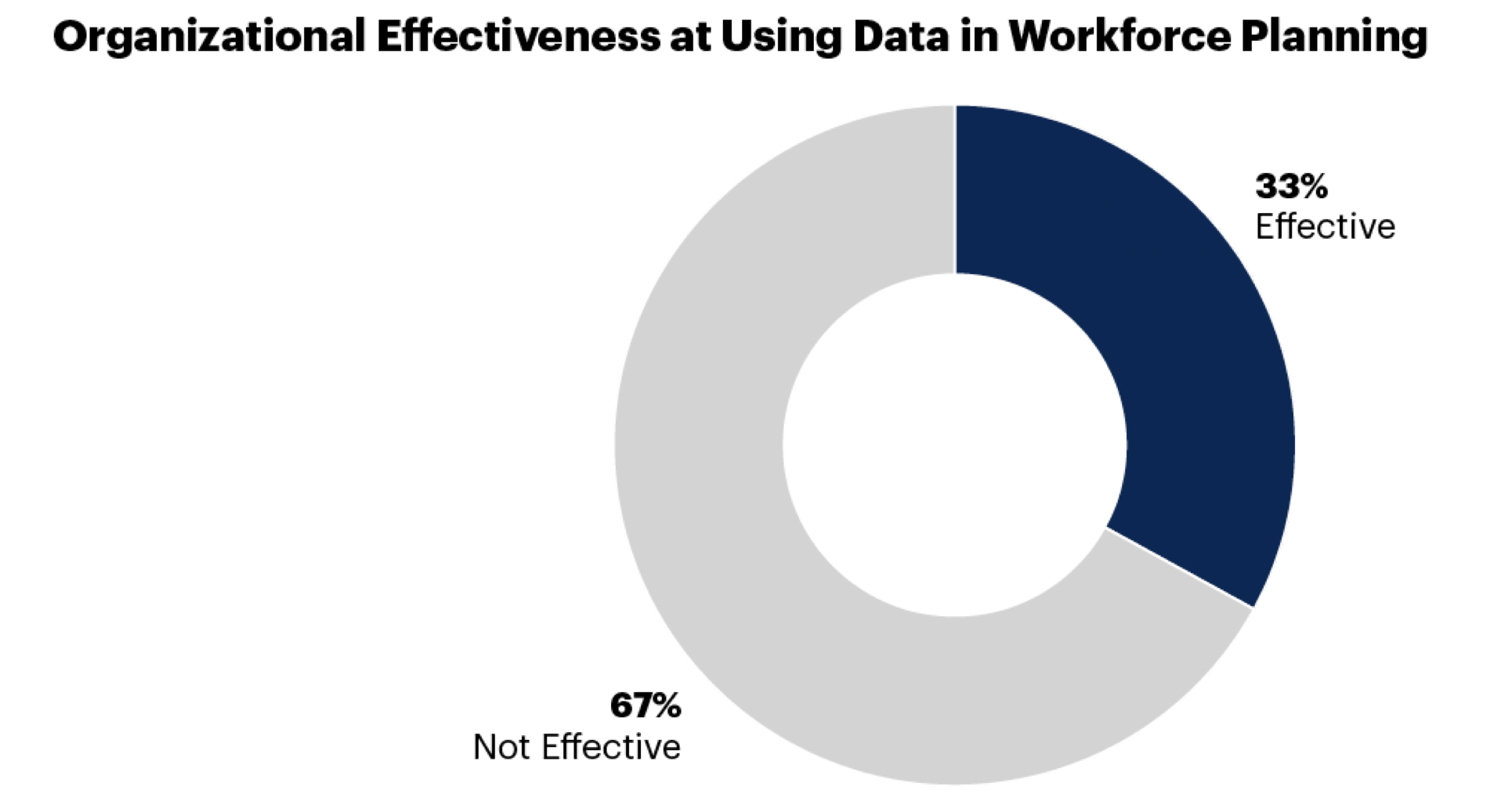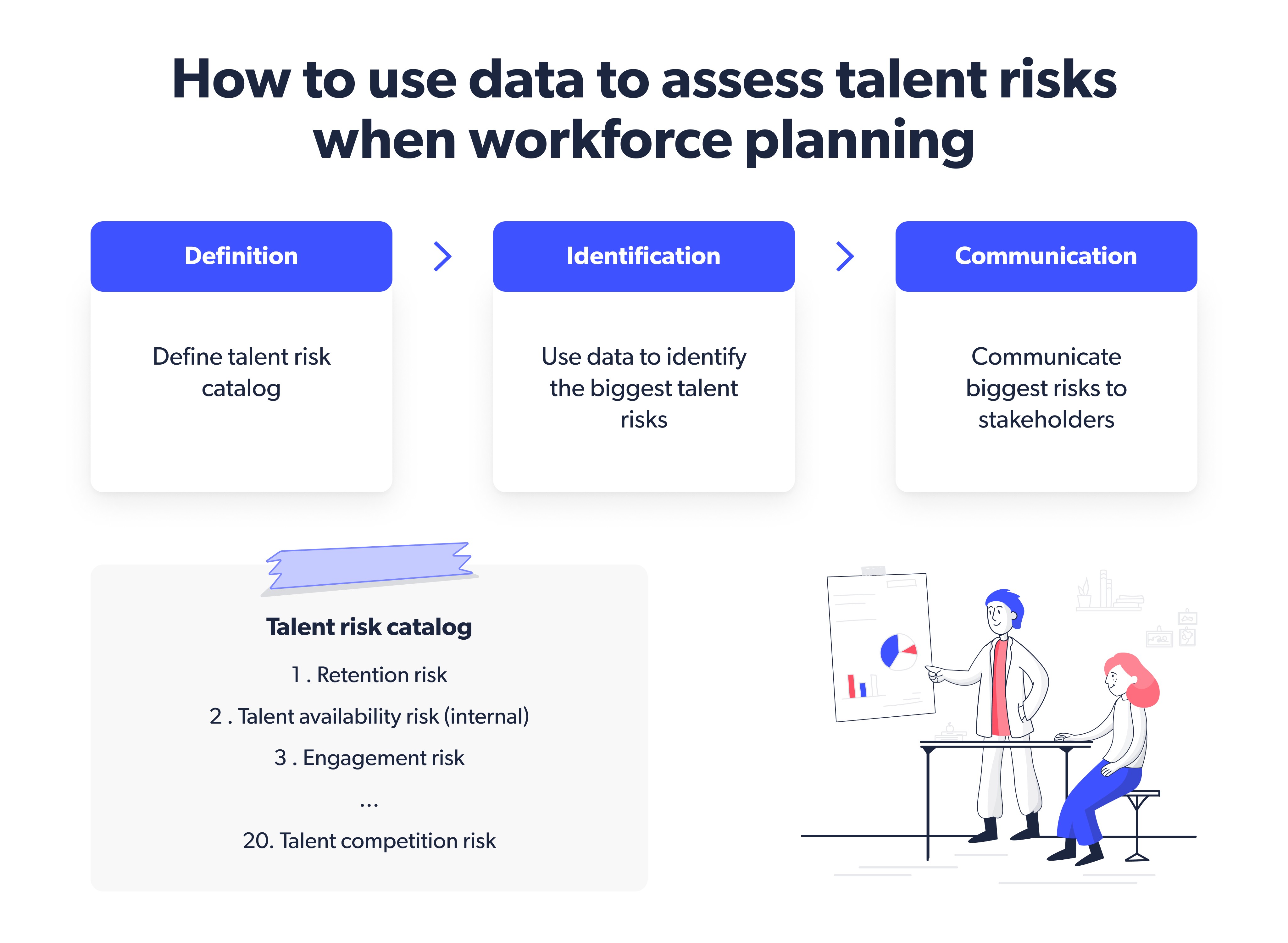Using market data for effective workforce management: Insights and examples
Data-driven HR through market data insights workshop
In October 2023, Florian Fleischmann, CEO and co-founder of HRForecast, led a workshop highlighting the critical role of market intelligence in data-driven HR and workforce planning. The workshop reviewed the limitations of solely relying on internal data and underscored the immense value of external market data. It provided insights into how HR professionals could use algorithms and external data for comprehensive analysis, which is key to managing the workforce effectively. These insights include understanding job market trends, skills demands, salary benchmarking, and adapting recruitment strategies to changing skill sets. Additionally, Florian highlighted the benefits of developing efficient job architectures and the significant impact of market data on internal workforce development and shifts in role demands.
Building on these insights, the workshop resonated with business owners and HR professionals from North America and Europe, emphasizing how effectively managing a workforce, a vital asset, can notably influence a company’s success. Leveraging workforce analytics and HR data becomes pivotal in this context.
The rise and impact of workforce analytics in strategic management
Organizations can optimize their workforce by examining HR data related to employee productivity, attendance, and scheduling.
A survey by Harvard Business Review reveals an increasing trend in data utilization during the last ten years. According to them, 15% of respondents employed specialists in predictive analytics based on HR data already in 2014, which increased to 86% in 2023. It underscores the growing importance of workforce planning data in strategic decision-making.
Effectively utilizing workforce analytics and HR data significantly improves operational efficiency, employee engagement, and overall performance. For HR leaders, strategically using this data in workforce planning is essential to inform key decisions. Considering that employees can account for 50-70% of a company’s expenses, understanding and optimizing the workforce through people analytics is not just beneficial but crucial.
For example:
Let’s say your company has an annual revenue of $50,000,000. Considering that employees’ expenses, including salaries, benefits, and related costs, typically account for 60% of the company’s expenses, you can calculate a range for this scenario:
- Total revenue: $50,000,000
- Percentage of revenue allocated to employee expenses: 60%
- Total employee expenses: $50,000,000 \times 60\% = $30,000,000.
As you can see, a significant portion of your revenue goes towards employee expenses, which leads to the importance of effective workforce analytics and HR data utilization. Managing and optimizing these expenses is beneficial and crucial for the company’s sustainability and growth. Efficient workforce planning and utilization of HR analytics can help better manage these costs while ensuring employee engagement and operational efficiency. So, it’s a key aspect of strategic decision-making for HR leaders and can significantly influence the company’s overall performance and employee engagement.
Organizations can uncover areas of expertise and potential new business opportunities by analyzing employee skill data. As highlighted in the workshop, this comprehensive approach to leveraging workforce analytics and HR data in workforce management demonstrates the far-reaching impact of data-driven strategies in today’s business landscape. We’ll talk about this in more detail below.
Understanding workforce analytics and HR data
Workforce analytics involves analyzing various data, including employee demographics, performance metrics, satisfaction levels, and turnover rates. Analyzing the job postings globally, we notice that certain regions and job titles are in higher demand than others. For instance, if a company is looking to hire IT professionals, they might find it more cost-effective to hire experts from regions where the demand for these professionals is lower, thus potentially reducing salary expenses. For example, hiring IT experts from regions with less demand could be 60% cheaper than hiring in high-demand areas like the U.S., where the labor market remains active.
According to Gartner, only 33% of HR leaders responsible for workforce planning consider their organization proficient in utilizing data. It reveals a significant gap, implying that 67% of organizations might not effectively leverage data in their workforce planning. To put this into perspective, let’s consider an example: Assuming there are 59,767 companies in Germany (as of August 2023), and based on Gartner’s calculations, approximately 19,723 of these companies are proficient in using data for workforce planning. Around 40,044 German companies (67% of the total) may not effectively leverage data in their workforce planning strategies. This underutilization signifies a missed opportunity for these companies to harness talent intelligence, pivotal for identifying talent risks and aligning workforce strategies with long-term business goals. Hence, 40,044 companies in Germany could be at a competitive disadvantage due to not fully integrating workforce data analytics into their strategic planning.
Talent intelligence refers to the process of collecting and analyzing competitor-related data to gain a competitive advantage. It’s akin to business intelligence, which predicts future business outcomes and creates effective strategies. Talent intelligence helps better plan the workforce by analyzing competitors’ talent pool, skills, work culture, and functions. This approach assists talent acquisition and retention, filling skill gaps and enhancing workforce productivity.
Talent intelligence for a diverse workforce
Diversity in the workforce has gained immense importance. For instance, a LinkedIn report states that companies with diverse workforces are 35% more likely to outperform others, underlining the importance of tracking diversity and inclusion metrics. However, unconscious bias in hiring is a common challenge. Talent intelligence solutions can help mitigate this bias by matching profiles to job openings based on compatibility rather than just job titles or work experience. This approach leads to a more diverse and efficient workforce.
Have you tried smartHire, the future in talent intelligence?
Discover the edge of talent intelligence with smartHire. Gain insights on time-to-hire rates and salary ranges, ensuring you make informed decisions in your recruitment process and use market data to benchmark your hiring timeline against industry standards.
Limitations of current workforce planning data
So, we talked about how it would be ideal to search for talent (using analytics with skills and experience in recruiting). However, in reality, everything is a little different. Many HR leaders find it challenging despite the recognized need to leverage data in workforce planning. Use data to identify and understand talent-related risks, guiding their business strategies. This process includes training teams to handle data proficiently, akin to how it’s utilized for managing other business risks such as compliance or fraud. Embracing a data-driven methodology enables HR leaders to assist business executives in proactively acknowledging and addressing talent-related issues.
How to use data to assess talent risks to business strategy
Using data to assess talent risks involves a meticulous approach that enhances workforce planning and management. This is achieved through three key steps:
- Defining a talent risk catalog. HR should create a comprehensive catalog listing potential talent risks, such as skill shortages, high turnover rates, leadership gaps, diversity issues, and employee engagement problems. For example, a risk like “Shortage of skilled software developers” could severely impact a tech company’s operations. This catalog, covering around 20-25 risks, serves as a foundational reference and should be updated as needed.
- Identifying key talent risks. Regular assessments of the talent risk catalog are crucial to identify risks most relevant to current business strategies. For instance, during rapid technological change, a major risk could be “Inadequate technical training for staff.” This step is vital for strategic workforce planning, including decisions about hiring and development.
- Communicating talent risks. Effectively communicating these risks to stakeholders is essential. You can do this through visual tools like infographics highlighting major risks such as “High turnover in leadership positions” or “Insufficient emerging leader pipeline.” Such visuals should elucidate the risks and their potential business impacts, encouraging stakeholders to prioritize actions like digital skills training.
To effectively leverage workforce analytics, identify and track key metrics such as employee turnover, absenteeism, engagement, and healthcare utilization. These metrics provide a foundation for understanding the current state of the workforce.
Secondly, invest in robust systems that allow for accurate data collection and integrate various HR systems to achieve a comprehensive view of the workforce. This integration ensures that all relevant data points are considered in decision-making processes.
The use of tools to visualize and report data is crucial. These tools can transform complex datasets into easily understandable visual formats, facilitating decision-making by making data more accessible and interpretable.
Finally, predictive analytics is a key aspect of a forward-looking HR strategy. By anticipating future trends, HR can identify potential risks, such as attrition or emerging skill gaps, essential for proactive workforce planning. This comprehensive approach to data-driven decision-making enables HR professionals to more effectively manage their workforce and plan for future needs.
The end purpose and business implications of data use
The end goal of these steps is to empower business leaders with actionable insights, enabling them to make informed decisions about their workforce. Neglecting these practices can lead to missed opportunities, ineffective talent management, and a loss of competitive advantage.
Companies that don’t invest enough effort and resources into these areas may struggle to adapt to market changes and workforce dynamics.
Below, we shared some examples from real companies that integrated market intelligence into their workforce planning. You can use these practices and ideas to find the solutions you need. Or understand how HRForecast can help you implement market data into your workforce planning to navigate the complex landscape of workforce planning and talent risk management.
Get more insights about strategic HR decision-making
Dive into the world of data-driven HR decision-making. Discover essential strategies, including metrics Identification, data collection & integration, data visualization & reporting, and predictive analytics.
Examples of using market intelligence for workforce planning
“In the world of HR, data is not just a tool; it’s the future,” — Florian Fleischmann, CEO of HRForecast.
It’s essential for business as organizations increasingly recognize the transformative power of data in human resource management. Deloitte shared that 71% of companies prioritize HR analytics in their organization. Still, only 9% believe they have a good understanding of which talent parameters affect the performance of their organizations.
The transition to a more analytical approach in HR is due to the need to navigate the complexities of the modern workforce and the dynamic nature of the labor market. We shared below real-world examples of how organizations have successfully applied data-driven HR strategies to overcome challenges, streamline processes, and achieve significant business results.
Transform recruitment and development with data analytics
In response to talent supply bottlenecks and evolving labor market conditions, EY revamped its recruitment and development strategies. By leveraging workforce analytics, EY identified key factors affecting employee turnover and discovered insights into the labor market. They used statistical methods to understand the dynamics of various employee groups, tailoring their recruitment to address competency gaps.
Outcome: EY’s strategic use of HR data led to more informed recruitment and development decisions, significantly influencing workforce planning and management.
Accomplish three different HR challenges using predictive modeling
Stadtwerke Düsseldorf needed to address multiple workforce challenges, including risk estimation and spatial planning. HRForecast helped them implement data analysis, predictions, and simulations. This approach enabled efficient planning of office space, identification of workforce risks, and anticipation of labor market trends.
Outcome: The company effectively navigated various challenges by harnessing workforce planning data and predictive analytics, ensuring efficient operations and strategic talent acquisition.
Gain transparency on global labor market skills to inform SWP decisions
Merck Group sought a deeper understanding of global labor market trends to align its workforce with strategic business goals. Through a comprehensive ‘Market Intelligence’ analysis, including competitor benchmarking and future workforce insights, Merck Group identified critical roles and skills for future success.
Outcome: This strategic use of workforce analytics enabled Merck Group to adapt its workforce planning, filling skill gaps and aligning with emerging business needs.
Redesign workforce architecture for enhanced profitability
CMS aimed to enhance the profitability of its service lines through strategic workforce planning. The company collaborated with HRForecast to model business changes and workforce demand. They used scenario simulations and talent management strategies to reshape their workforce architecture.
Outcome: This data-driven approach provided CMS with actionable insights, enabling them to optimize career paths and develop efficient talent management strategies.
Use big data analytics for long-term workforce planning
hanseWasser faced the daunting task of developing long-term, flexible recruiting strategies amid a looming retirement wave. The application of big data analytics provided a comprehensive view of future workforce demands and competency gaps.
Outcome: The company successfully developed a strategic workforce plan, ensuring readiness for future challenges and opportunities, a testament to the effectiveness of leveraging data in workforce management.
Align workforce planning with digital transformation
Kramp needed to harmonize its workforce planning with the evolving digital landscape. By integrating workforce, financial, and business planning with external data, Kramp crafted a scenario-based approach to workforce planning.
Outcome: The company’s proactive measures in workforce dynamization and tailored talent management strategies highlight the importance of analytics in modern HR practices.
The future of workforce management
- The Society for Human Resource Management (SHRM) reports that organizations utilizing workforce analytics are 56% more likely to achieve higher-than-average financial performance.
- A study by McKinsey & Company found that companies that use HR data and analytics for workforce planning see a 5% increase in productivity.
- According to Deloitte’s 2020 Global Human Capital Trends, 75% of companies using advanced workforce planning had significant improvements in employee engagement and retention.
These insights show that effectively leveraging workforce analytics and HR data is not just about collection and analysis; it’s about integrating these insights into strategic planning and operational decisions. This approach leads to enhanced decision-making, better employee experiences, and a more resilient organization. Integrating advanced analytics and data-driven strategies becomes essential for future success as the workforce evolves. So, if you’d like to learn more about this or use HRForecast solutions in practice, feel free to contact us and book a demo.
Stay up to date with our newsletter
Every month, we’ll send you a curated newsletter with our updates and the latest industry news.





























 info@hrforecast.de
info@hrforecast.de
 +49 89 215384810
+49 89 215384810






